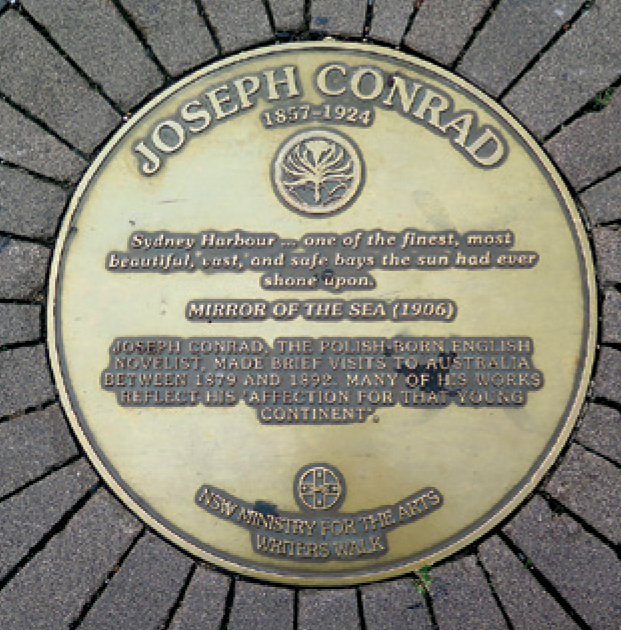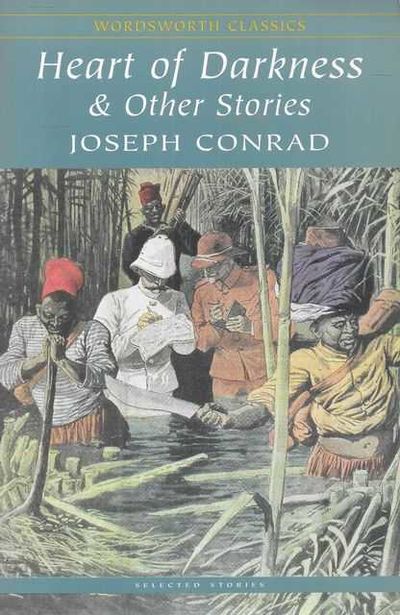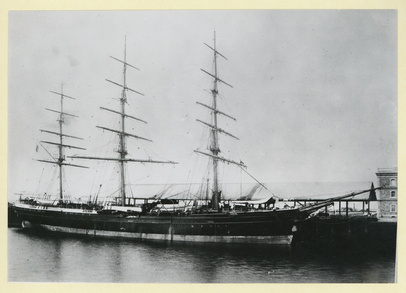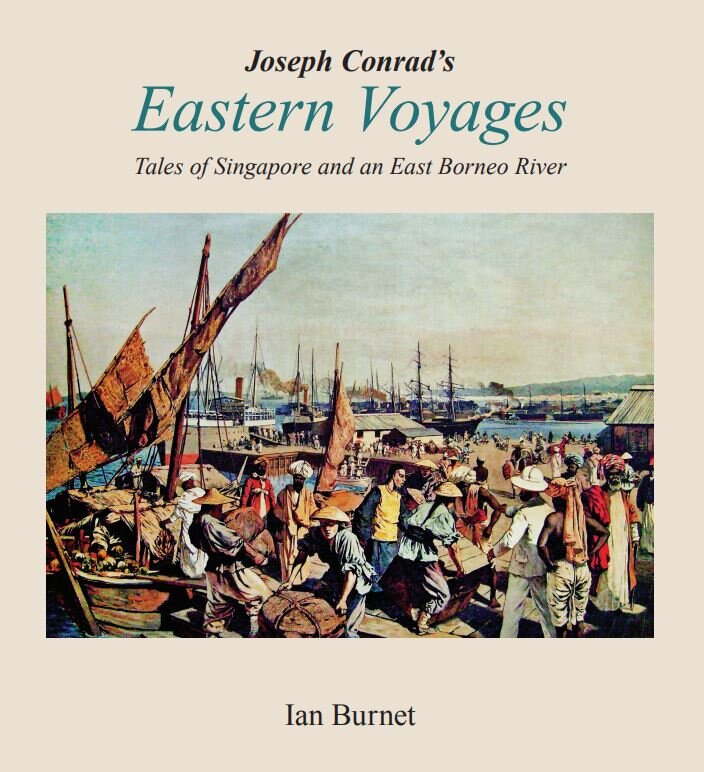Ron Witton
For many of us, Joseph Conrad is known as being the famous English author of books such as Lord Jim and Heart of Darkness (which was made into a famous film). Those of us who live in Sydney may, on seeing his plaque on Circular Quay’s writers walk, have been surprised to learn that he had visited our shores. Ian Burnet's Joseph Conrad’s Eastern Voyages, has many such surprises for us, and particularly for those with an interest in Indonesia.
Far from being an 'English author', Conrad was in fact born in Poland in 1857 and at birth was given the name of Józef Teodor Konrad Korzeniowski. His childhood was one of severe deprivation: his father was a Polish patriot and the family was arrested by the Russians and banished to the severe climate of northern Russia. The hardship of his childhood included experiencing the death of his mother while in detention, and subsequently the death of his father after his release due to ill-health. The rest of his youth was spent in the Russian-held part of Poland and later in France.

From an early age, Józef had his heart set on becoming a mariner. His life as a sailor began with four years on French ships before, at age 21, he arrived in England in 1878 where, with minimal English, he enlisted in the British merchant marine. For the next fifteen years Konrad Korzeniowski worked on a variety of ships first as a lowly crew member (steward, apprentice, able-bodied seaman), before achieving papers as a third, second and then first mate, before he eventually achieved the rank of captain.
Konrad loved sailing boats and was unwilling to serve on boats powered by steam. He spent much of his time as a mariner sailing in Southeast Asia between Singapore and Borneo. His intimate knowledge of the Indonesian archipelago arose from his four voyages as first mate on the steamship Vidar travelling to a small trading post some forty miles up a river on the east coast of Borneo. His maritime life led to great adventures including being signed on with a Belgian company to travel far inland into Africa up the Congo River. It was this experience that provided the basis of his novel Heart of Darkness. Later in life, his main role was captaining clippers between Europe and Australia.

His last long-distance voyage was in 1893 as captain of the Torrens from Adelaide to London. Among the passengers was John Galsworthy, a 25-year-old lawyer and future novelist with whom he struck up a friendship. Armand, a first mate, is the protagonist of one of Galsworthy’s first literary attempts, The Doldrums (1895–96), and this character is obviously modelled on Konrad. When the Torrens docked in London, Konrad left his maritime career to settle in England, and, at age 36, began his writing career under the pen name of Joseph Conrad.
Burnet’s fascinating study shows how Conrad’s writings drew on his own experience and how the characters he met, particularly in Indonesia, became central to the wonderful novels that gave him such a significant place in English literature. It is all the more astounding when one realises that English was in fact Conrad’s fourth language, after Polish, French and German.

Through historical research and by drawing on Conrad’s autobiographical writings, particularly his A Personal Record, Burnet has managed to document the voyages the author made and the people he met that were later woven into his many novels. In a masterful and incisive manner, Burnet analyses events and characters from Conrad’s own life to show how they inspired and indeed are reflected in the events and characters of Conrad’s novels, particularly The Rescue, Almayer’s Folly and An Outcast of the Islands.
Given the length of time Conrad spent in Borneo and in the Indonesian archipelago, it is clear he knew Malay, the lingua franca of the many linguistic communities of the islands. He knew much of local colonial events, and had met many local characters. For example, he was well aware of the role played to the north by James Brooke, the Rajah of Sarawak, and his descendants, who inspired characters in his novels. It is fascinating to see the way that the historical alliances and events of the colonial era are echoed in Conrad’s writing. As Burnet reminds us, Conrad wrote all his books by drawing from his memories only after he retired to England at a relatively early age. He had a long-standing desire to become a writer reflected in the fact that, during his many years at sea, he carried with him an outline manuscript for his first novel, Almayer’s Folly.
Aided by Conrad’s autobiographical writings, Burnet masterfully manages to blend Conrad’s own life experiences with the plots of his novels so that we have a real sense of daily life and adventure in Southeast Asia, and particularly the Dutch East Indies. Joseph Conrad’s Eastern Voyages is highly recommended and will lead many of us to read or re-read Conrad’s books, with new understanding.
At the end of his career, Conrad told an interviewer that he simply wrote in retrospect of what he saw and learnt during the first 35 years of his life. It is this that led Burnet in his creative endeavour to disentangle Conrad’s life from his fiction.
Ron Witton (rwitton44@gmail.com) gained his BA and MA in Indonesian and Malayan Studies from the University of Sydney and his Ph.D. from Cornell University. He has worked as an academic in Australia and Indonesia and now practises as an Indonesia and Malay translator and interpreter.
